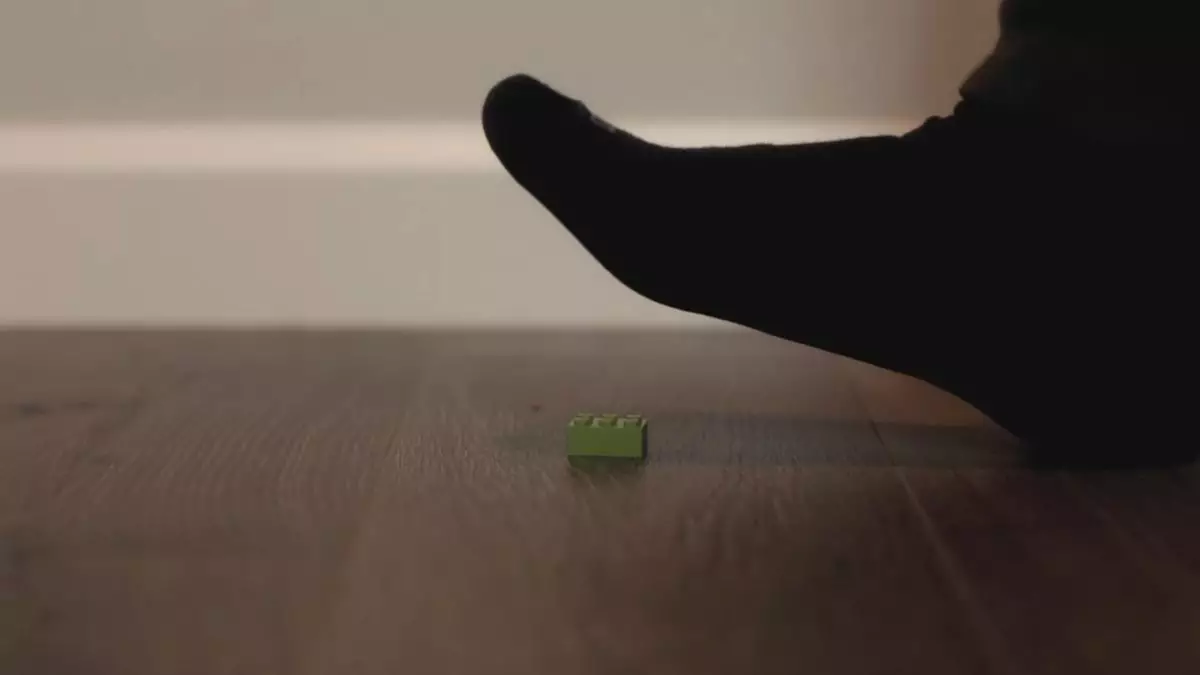In a world filled with everyday irritants, few experiences transcend the mundane to evoke deep emotional responses quite like stepping on a Lego brick. This peculiar and universal pain point prompted YouTuber Nate Scovill to undertake a scientific journey to discover which specific Lego causes the most agony when stepped on. While many might dismiss this pursuit as trivial, it touches on a broader theme of human experience—the juxtaposition of childhood nostalgia against the stark realities of adult life.
For many, the mere anticipation of stepping on a Lego piece evokes a visceral reaction—a mix of dread, humor, and empathy. Scovill’s willingness to delve into this topic scientifically suggests a desire not only to answer a quirky question but also to engage with a shared cultural experience. The quest enlists comedic undertones, where the stakes seem high yet absurdly playful; after all, who has not experienced the anguish of a forgotten brick lurking in unintended corners?
Scovill’s approach involved constructing a makeshift testing rig that could simulate the pressure of stepping on a Lego brick without exposing his own feet. While it could have been simpler to just step on the pieces directly, his explanation about avoiding unwanted internet fame on platforms like Wikifeet adds a layer of humor and relatability. It becomes apparent that Scovill is not just performing an experiment but also acknowledging the quirks of internet culture.
His unique setup involved approximating his weight and creating an arm that would hit the Lego bricks as part of an experiment to measure the “damage” inflicted. This intelligent approach, blending comedy and light-hearted skepticism of typical scientific rigor, embodies the essence of modern amateur science on platforms like YouTube. His methods can be seen as an invitation to audiences to view science as an accessible endeavor rather than an exclusive pursuit dominated by professionals.
The results of Scovill’s initial tests were startling. Surprisingly, a delightful wizard’s hat-shaped Lego piece proved to be a potent source of pain due to its pointed top, challenging preconceived notions of which types of bricks are the most dangerous. However, the true villain of the piece was the now-obsolete old Lego wheel, which had not only a fearsome design with a protruding metal axle but also a potential risk to foot health from rusting. An analysis of these findings reveals not only an entertaining outcome but an illustration of Lego’s evolution as a product designed for children’s safety.
Scovill’s experimentation took an unusual turn with the incorporation of a ballistics gel foot, inspired by myth-busting TV programming. The ambition to use advanced materials for a simple experiment showcases an innate human curiosity—pushing boundaries and seeking to comprehend the world in inventive ways. It’s fascinating how one simple question about childhood toys can lead to the exploration of materials science, albeit within a comedic frame.
However, the experiment was not without its flaws. Scovill encountered unforeseen setbacks when the zip ties used in the testing rig caused more harm to the gel foot than intended. This unfortunate turn of events could serve as a reminder that while scientific endeavors often aim for precision, they also reside in the realm of unpredictability and the learning curve. The core tenet of experimentation—the process of trial and error—shines through his narrative, emphasizing that even minor failures contribute to the overall understanding of a phenomenon.
In a twist mirroring real life, the ballistics gel foot became more of a casualty than a technology, leading Scovill to revert to a simpler method of testing. Through this development, the narrative subtly underscores a vital aspect of scientific exploration: adaptability. Scovill’s perseverance in the face of challenges reflects an inspiring ability to embrace the unexpected, reinforcing the importance of flexibility in research.
While the final results of Scovill’s investigations were left tantalizingly open for viewers to explore further, the overarching findings resonate with a collective understanding: stepping on a Lego is a universal rite of passage in many households. This exploration transcends pain inflicted by plastic; it is an ode to the reminders of childhood mischief and nostalgia.
In an age where the seemingly trivial often becomes the subject of earnest inquiry, Scovill’s exploration allows us to reflect on the deeper significance of shared experiences, human frailty, and the occasional absurdity of life. So, next time you find yourself gingerly picking your way across a carpeted floor populated with Legos, remember that you’re engaging in a cultural dance—one that countless others have experienced before you.

